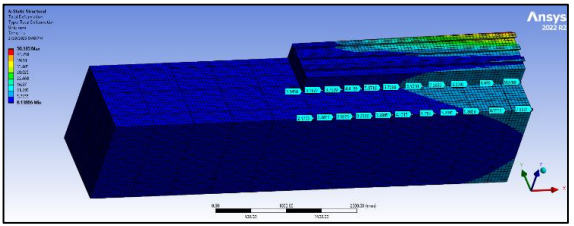Deflections Analysis of Ship Hull and Deckhouse by Numerical Approach
DOI:
https://doi.org/10.21276/jccci.2025.v1.i2.6Keywords:
Bending Stiffness, Deckhouse, Deflection, Finite Element Method, Forward Bulkhead, Hull, Local Stress Concentrations, Main Deck Supports, SuperstructureAbstract
In modern marine vessels, there is usually a long deckhouse or superstructure in the area of main deck. If the ship hull bends due to the sea and other external loads, then the deckhouse or superstructure bends in response to the loads transmitted to it by its connection to ship hull. These loads consist of the distributed longitudinal shear forces and distributed vertical forces acting on the lower edges of the sides of deckhouse. Depending on the rigidity of the substructure (bulkheads, frames, supports, etc.), the deckhouse is forced more or less into the bending curve of hull by additional vertical forces. The presence of the deckhouse influences the structural behavior of the ship hull. The rigidity can then be considerably greater than that of the ship hull alone if the deckhouse is long enough and the ship hull and the deckhouse are made of the same material and effectively connected together. In addition to these influences on the overall bending stiffness and the corresponding stress curves, local stress concentrations can be expected at the ends of the deckhouse, because here the structure is transformed abruptly from that of a beam consisting only of the main hull alone to that of hull plus deckhouse. In this paper, deflections for the inclination of the deckhouse forward bulkhead 90o, without main deck supports and those with main deck supports will be analyzed by Finite Element Method.
Downloads

Downloads
Published
Issue
Section
License
Copyright (c) 2025 Journal of Cognitive Computing and Cybernetic Innovations

This work is licensed under a Creative Commons Attribution-NonCommercial 4.0 International License.





